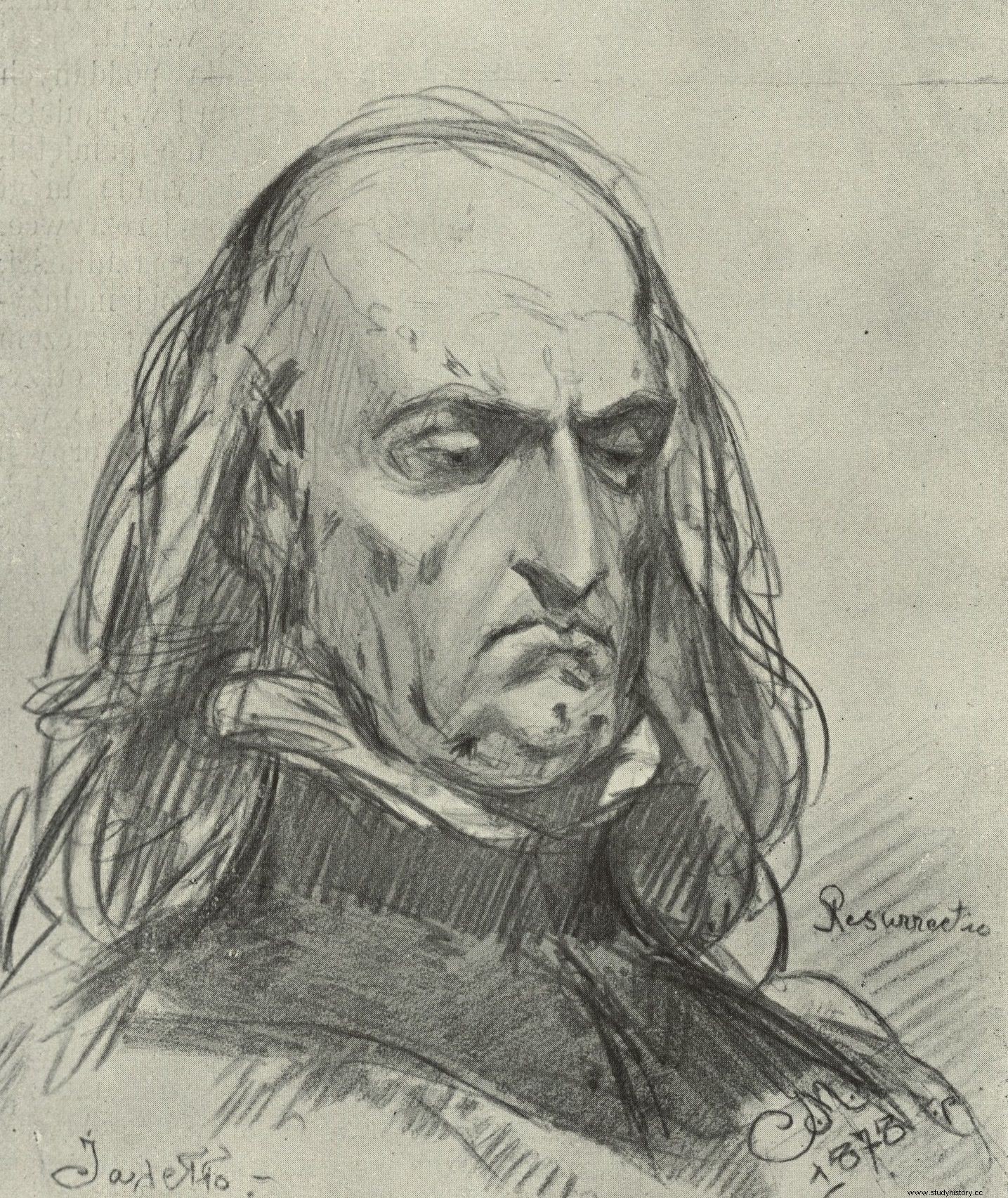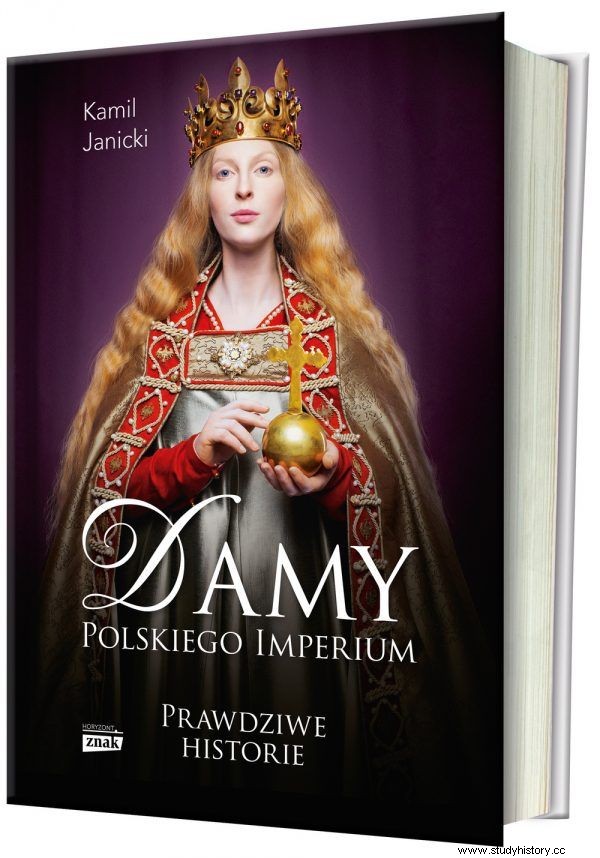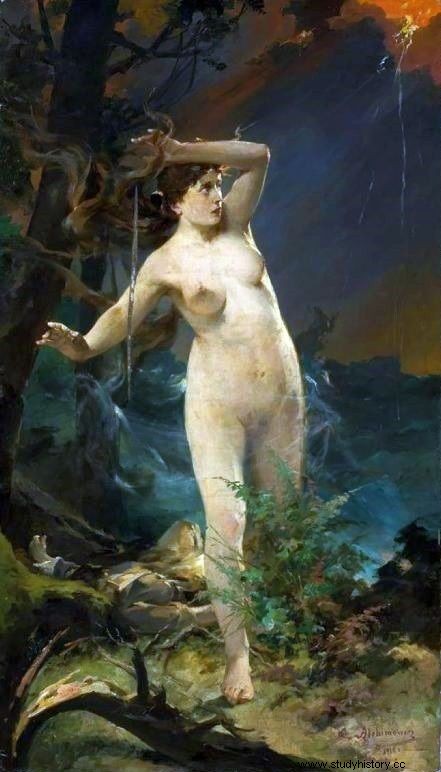The Teutonic Knights portrayed him as a wild idolater. Jan Długosz ridiculed his superstitions. And historians still make him primitive. Completely wrong.
If you believe the textbooks, the Lithuanian prince Jogaiła (or, as we write it today:Jagiełło) was the ruler of the last pagan country in Europe. It was only thanks to the teenage Polish queen Jadwiga Andegaweńska, who graciously agreed to take him as her husband, that he saw the light of the truth and introduced his entire homeland to Christian Europe.
So many official cliche. The reality turns out to be even more interesting. Because contrary to the legends repeated until today, Lithuania was a largely Christian country ... even before it was baptized.
Difficult neighborhood
Lithuanian tribes have lived just outside the balkans for centuries. And they have always been regarded as extremely troublesome neighbors. Almost every year Lithuanians organized bloody raids on neighboring lands. On the inhabitants of Ruthenia, on the state of the Knights of the Sword in Livonia, and finally on the princely divided into Polish districts. Expeditions, inconvenient and devastating from the outset, but nonetheless cluttered and organized for the sole purpose of trapping treasures, gradually became deadly. The Lithuanians were uniting and their nascent state was transformed into a new superpower.

Władysław Jagiełło on an unfinished sketch by Jan Matejko. Illustration from the book by Kamil Janicki entitled "We will give the Polish empire."
During the reign of Władysław Łokietek, i.e. at the beginning of the 14th century, they were responsible for the area of today's Lithuania and two-thirds of Belarus. But in the times of Jadwiga Andegaweńska, Lithuania was everything that lay east of her country:from the Baltic Sea to the outskirts of Moscow and from Połock to Bracław. Lithuania has swallowed almost all of Russia. And it had an impact on the face of the state.
Faith and throne
By conquering successive principalities that were once part of Kievan Rus, Lithuanians adopted their culture, but also religion. Those of the local dynasts who had taken over areas distant from the cradle of the state - Pinsk, Turów, Brest or Lutsk - voluntarily converted to Orthodoxy, learned the Ruthenian language and customs. In the capital city of Vilnius, there was also an Orthodox district, known as the "Ruthenian angle". Orthodox churches and monasteries were built there, and the followers of Eastern Christianity made dizzying careers at court.

A history of a turning point in Polish history. Jadwiga Andegaweńska and Władysław Jagiełło in the new book by Kamil Janicki:"Ladies of the Polish Empire".
For Catholics, no one blocked the way to positions and offices, and the Lithuanian princes themselves had been trying to be baptized from Rome for centuries. Moreover, Mindaugas, who officially ruled in the mid-thirteenth century, became a Catholic. Outstanding strategist and politician considered the unifier of Lithuania. He built a cathedral in Vilnius, baptized his relatives and boyars, and then ... unexpectedly returned to paganism. All his successors maneuvered in the same way - not because of their hesitancy or stubbornness, but for purely political reasons. Lithuania remained officially pagan, because Catholicism meant recognition of the primacy of the state's mortal enemy for years waging a devastating war with Lithuanians:the Teutonic Order.
Appearances of paganism
The faith of the ancestors strengthened the inhabitants of the principality in the resistance to the knights in white cloaks with black crosses. Rulers could not accept a forced baptism or a baptism that would undermine their authority and position. They had to act prudently, caring for the appearances and morale of their subjects. As a result, the Western faith was infiltrating Lithuania unofficially and as if through a back door. But that it penetrated - that is beyond doubt.

The Lithuanian goddess of love Milda in the image of Kazimierz Alchimowicz (1910).
The founder of the Lithuanian dynasty and one of the most important rulers in the history of the country, Gediminas, who ruled in the first half of the fourteenth century, did not become a Christian, but surrounded himself with monks, took advantage of their advice, and even founded several churches and monasteries. The most important of them - the Franciscan religious house in Vilnius - still existed in 1385 (i.e. when Jagiełło decided to "convert") amidst an alleged sea of paganism and backwardness.
Under the influence of Western culture, the local Lithuanian faith was also changing. Gediminas himself emphasized that it did not differ much from Christianity. He said that Orthodox and Catholics worship God according to their custom, and "we worship him according to our own customs and we all have one God ”.
All that was needed was an impulse that would allow Lithuania to be officially and permanently drawn into Europe. But it was definitely not necessary to convert and civilize Jagiełło's homeland.
Are you interested in this text? Its author also runs the "Wielka Historia" channel on YouTube.
***
The fascinating fate of the marriage of Władysław Jagiełło and Jadwiga Andegaweńska is described in my latest book: "Ladies of the Polish Empire" . Available for purchase today at empik.com.
Holy queens who fell in love with the authorities. The fascinating story of Jadwiga Andegaweńska and her time:
Selected bibliography:
The article was based on materials collected by the author during the work on the book "Ladies of the Polish Empire. The Women Who Built a Power " . Some of these items are shown below. Full bibliography in the book.
- Abraham W., The beginnings of political and religious ties between Lithuania and Poland in the 13th and 14th centuries [in:] The work of Jadwiga and Jagiełło , comp. W. Biliński, Publishing House of the Archdiocese of Warsaw, Warsaw 1989.
- Beresnevičius G., Paganism [in:] Culture of the Grand Duchy of Lithuania , Universitas, Krakow 2006.
- Kiaupa Z., Kiaupienė J., Kuncevičius A., History of Lithuania. From the earliest times to 1795 , PWN, Warsaw 2008.
- Korczak L., Christianization of Lithuania during the reign of Władysław Jagiełło [in:] St. Jadwiga Królowa and the Christianization of Lithuania, Parish st. Jadwigi Królowej, Krakow 2010.
- Nikodem J., The assumption of power in Lithuania by Jagiełło in 1377 , "Przegląd Historyczny", vol. 92, issue 4 (2001).
- Krzyżaniakowa J., Ochmański J., Władysław II Jagiełło , Ossolineum, Wrocław 2006.
- Łowmiański H., Incorporation of Lithuania into Poland in 1386 [in:] the same, Prussia - Lithuania - Teutonic Knights , comp. M. Kosman, State Publishing Institute, Warsaw 1989.
- Samsonowicz H., The historical background of Poland's relationship with Lithuania [in:] The work of Jadwiga and Jagiełło , comp. W. Biliński, Publishing House of the Archdiocese of Warsaw, Warsaw 1989.
- Wasilewski T., Around Poland's ties with Lithuania [in:] The work of Jadwiga and Jagiełło , comp. W. Biliński, Publishing House of the Archdiocese of Warsaw, Warsaw 1989.
